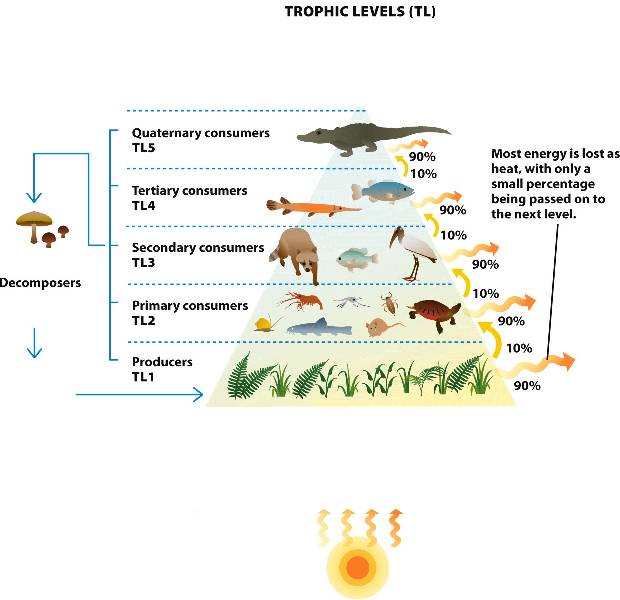
 Organisms in an ecosystem occupy trophic levels defined by energy use.
Organisms in an ecosystem occupy trophic levels defined by energy use.
Light energy from the sun flows into an ecosystem and is transformed into other forms through organisms.
Producers occupy trophic level 1: they capture sunlight and transform it into chemical energy by photosynthesis.
The transformed energy is then available for consumers at higher trophic levels: primary consumer, secondary consumer, etc.
Most energy is lost at each trophic level; only about 10% is available to the next level on the trophic pyramid.
After organisms die, the remaining energy is available to decomposers, which recycle nutrients in the ecosystem.